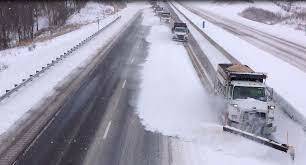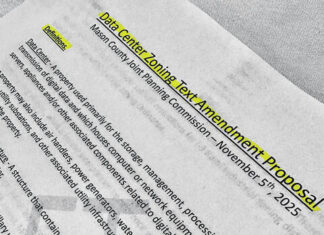Kentucky Transportation Cabinet snow and ice crews were geared up Sunday for the full-force arrival of Winter Storm Izzy, especially in the central and eastern two-thirds of the state.
“As always with major winter storms, public safety is our top concern and our top priority,” Gov. Andy Beshear said. “The single most important and effective way to stay safe in extreme winter conditions is to strictly limit travel and remain at home as long as possible.”
KYTC crews in much of the state expected to be battling heavy snow, with possible icing, mainly east of the I-65 corridor. The National Weather Service at Louisville predicted heaviest accumulations – up to 8 inches – along and east of a line from the Lake Cumberland region, up through the I-75 corridor.
“Our Transportation Cabinet crews are prepared and working hard but need the public’s help and cooperation. That means not driving unless it’s absolutely essential,” KYTC Secretary Jim Gray said.
Preparations for Izzy actually began prior to the weekend with pretreatment of bridges, ramps, overpasses and roadways in areas considered most likely to have precipitation.
KYTC crews and contractors began reporting to county maintenance facilities Sunday morning – shortly after midnight in some districts – to load salt and equipment and begin patrolling.
Once a storm begins, plow trucks will stay on the road. But in extended periods of continuous precipitation, snow can quickly pile up behind plows. Motorists should limit travel, venturing out only when essential.
For those who must travel, be mindful of changing road conditions – remember that snow will pile up between snowplow passes – and drive carefully. Reduce speed, keep safe distances between vehicles and give snowplows plenty of space. Monitor traffic conditions at GoKY.ky.gov online or use Waze.
Wet, heavy snow always carries the potential for downed trees and power lines. KYTC crews will respond with chainsaws when and where possible, but residents should be prepared for power outages.
Safe roadways are a shared responsibility, especially during inclement weather when risks increase. KYTC encourages motorists to prepare for winter and remain safe by following these tips:
— Travel only as necessary during major winter weather events. Stock vehicles with ice scrapers, jumper cables, blankets, a flashlight, cell phone charger, non-perishable snacks and first aid kit should you get stranded on the road.
— Winterize vehicles. Have your car battery, tire pressure and brakes checked. Make sure your heater, defroster, headlights and windshield wipers are working properly.
— When snow and/or ice are on roadways, drive slowly no matter what type of vehicle you’re in. It takes more time and distance to stop your vehicle in poor weather conditions, so brake early and slowly.
— Pay attention to weather advisories and allow more time to travel for routine commutes.
— Slow down when approaching intersections, off-ramps, bridges or shaded areas. These are all candidates for developing black ice—a thin coating of clear ice that can form on the pavement surface that may be difficult to see.
— Maintain a safe distance from snowplows and other heavy highway equipment and do not pass snowplows on the shoulder.
— Know before you go. Download the free WAZE app or visit goky.ky.gov to check traffic conditions before you travel. The map also offers access to select traffic cameras on interstates and parkways.
— While driving, eliminate distractions such as eating or using a phone.
— Abide by Kentucky’s Quick Clearance law: Move vehicles to the shoulder in the event of a non-injury crash.
— Throughout the winter season, KYTC will be highlighting the men and women across the state who serve on the frontlines and behind the scenes of the Cabinet’s snow and ice removal efforts. Follow @KYTC and like us on facebook.com/kytc120.
Follow your local KYTC Department of Highways district office on Twitter and Facebook for regional transportation updates.
The Cabinet’s snow and ice information website, snowky.ky.gov, provides details about priority routes, helpful winter weather tips, fact sheets and videos on salt application and snow removal.






